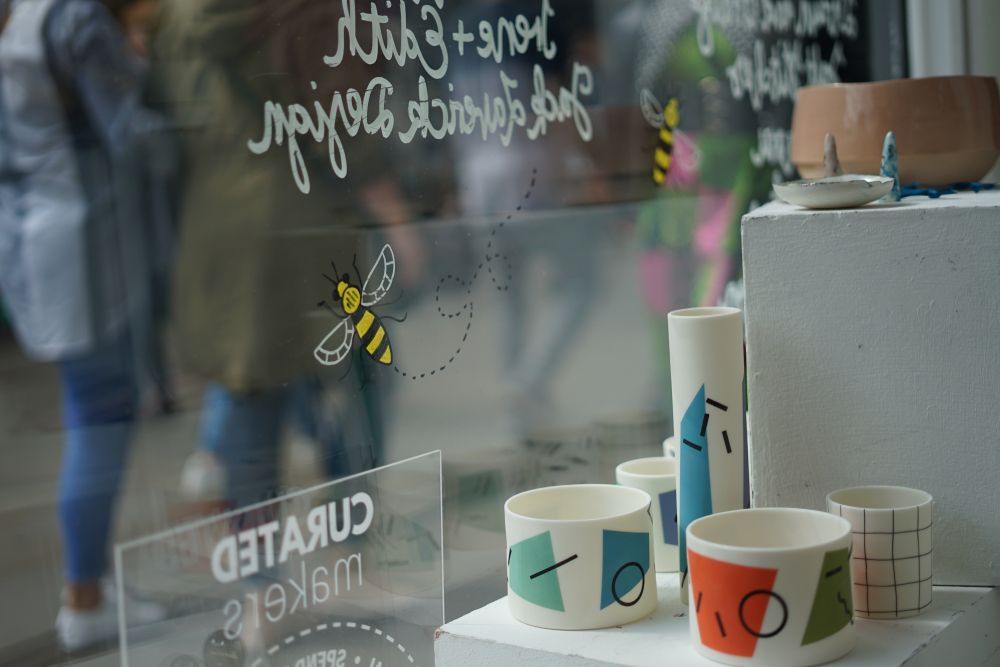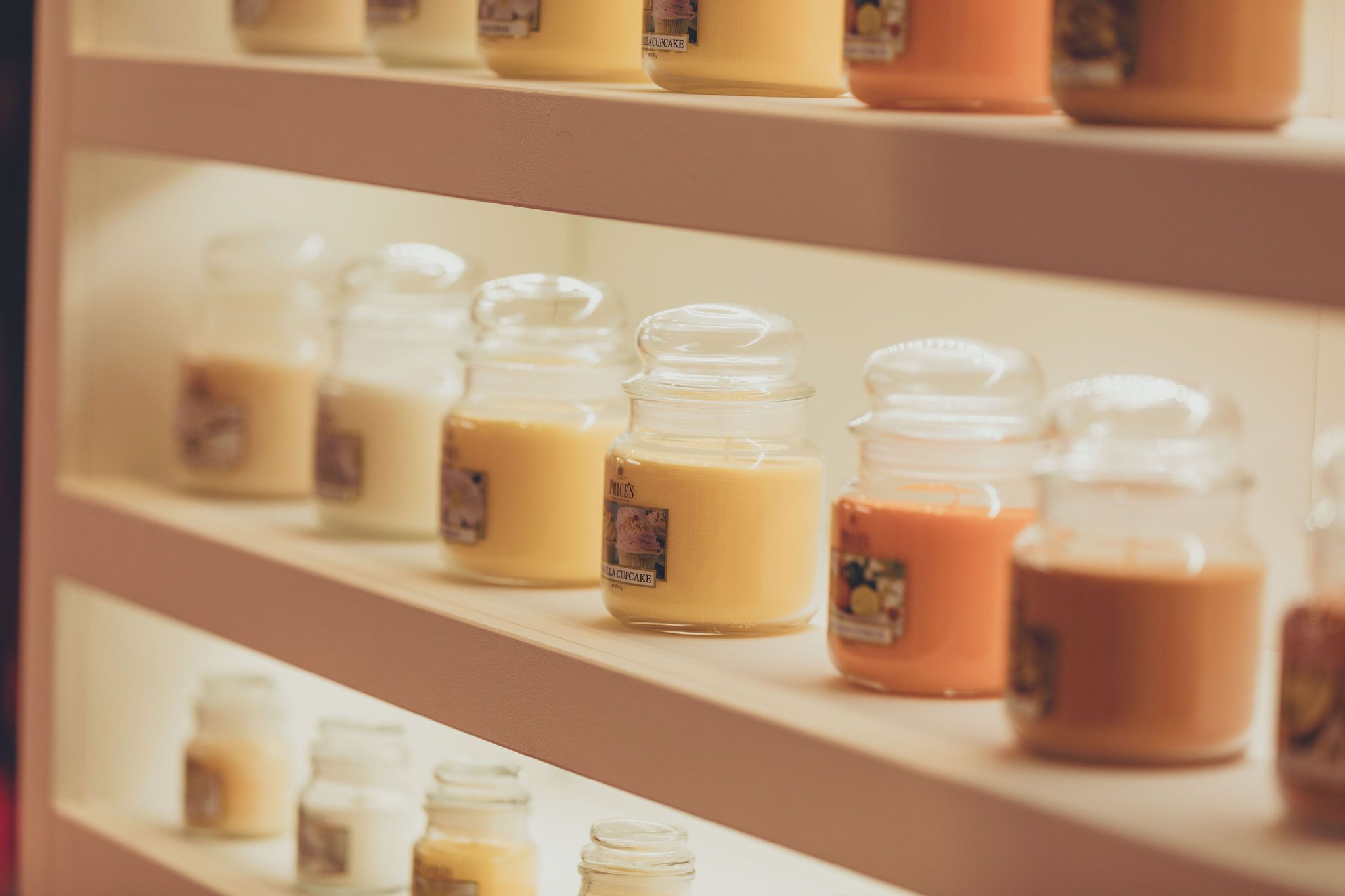Bridging the Gap: How Pop-Up Stores Leverage Can E-Commerce
)
Pop-up stores have become a key retail strategy for brands seeking to engage customers in new, innovative ways. By blending physical and digital shopping experiences, these temporary stores offer an exciting platform to experiment with e-commerce technology and attract a broader audience.
The integration of technology and e-commerce into the pop-up model allows brands to create seamless omnichannel experiences, reach online consumers, and stay ahead of the latest trends. As pop-up stores evolve, so too do the opportunities for retailers to harness e-commerce tech and strengthen the connection between their digital and physical operations.
Enhancing the Physical Experience with E-Commerce Technology
Pop-up stores offer a unique space where the digital world meets physical retail. One of the key ways pop-ups leverage e-commerce technology is through creating interactive and engaging in-store experiences. Many brands are now using digital displays, mobile payment systems, and even VR to bridge the gap between online and in-person shopping. For instance, mobile point-of-sale (POS) systems streamline the checkout process, allowing customers to complete purchases quickly, while QR codes on items link directly to the brand’s online store, offering additional sizes or product information.
Furthermore, ecommerce tech news often highlights innovations that allow customers to access exclusive online content or discounts when visiting a pop-up. By scanning a code or signing up online, customers can unlock special deals, which drives engagement across both channels. This seamless integration of ecommerce technology enhances the overall shopping experience, blending convenience with the tangibility of testing out products in-store. For brands, pop-ups become a tool to not only drive immediate sales but also gather valuable data on customer preferences, browsing habits, and how they interact with products.
In addition to improving the customer experience, the incorporation of ecommerce technology trends helps retailers manage logistics more efficiently. Many pop-ups are set up with inventory tracking systems that sync with online platforms, ensuring that stock levels are accurate both in-store and online. This prevents over-ordering or stockouts, allowing brands to offer customers a more reliable shopping experience while optimising their supply chain.
Driving Traffic to E-Commerce Platforms
A well-executed pop-up store can significantly boost traffic to a brand's e-commerce site. By using technology and e-commerce to create buzz around their temporary retail space, brands can direct online and offline customers to their digital platform. Pop-ups often promote limited-edition collections or exclusive product drops that are available both in-store and online, creating a sense of urgency and driving customers to the brand's e-commerce site. This omnichannel strategy encourages shoppers to continue their buying journey online, particularly after the pop-up has closed.
Brands frequently utilise social media and email marketing to promote their pop-up events, linking these digital campaigns to their e-commerce platforms. By advertising the pop-up online, they not only attract visitors to the physical location but also raise awareness about their digital store. Ecommerce tech news often covers how brands integrate social media with pop-ups, using platforms like Instagram to feature live events, behind-the-scenes content, and interactive features that allow users to shop online. This combination of physical presence and online promotion allows brands to capture a wider audience.
Moreover, offering click-and-collect services at pop-up stores is another effective way to drive traffic to e-commerce platforms. Customers who purchase items online can opt to pick them up at the pop-up location, giving them an additional touchpoint with the brand and encouraging further in-store browsing. This strategy not only boosts online sales but also promotes cross-channel engagement, demonstrating how e-commerce technology can blur the lines between digital and physical retail spaces.

Utilising Data from Pop-Up Events
One of the significant benefits of combining ecommerce technology with pop-up stores is the opportunity to collect valuable customer data. By tracking online and in-store behaviours, brands can gain deeper insights into customer preferences, purchase patterns, and product performance. This data can then be used to personalise marketing strategies, refine product offerings, and improve the overall shopping experience, both online and offline. As ecommerce technology trends evolve, retailers are increasingly adopting tools like digital footfall trackers and smart mirrors that gather customer insights in real-time.
For instance, when customers visit a pop-up store, brands can monitor which items are most popular or which products generate the most online engagement. This data allows brands to tailor their e-commerce platforms to better reflect customer demands. Additionally, retailers can use insights from pop-up stores to optimise inventory management, ensuring that popular items are restocked online and less popular products are phased out. With technology and e-commerce enabling real-time data collection, brands can make more informed decisions about future product launches and marketing campaigns.
Another aspect of leveraging ecommerce technology in pop-up stores is the opportunity for brands to gather customer feedback directly. Pop-ups provide a more intimate setting than traditional stores, allowing brands to interact with customers face-to-face. By integrating digital surveys or interactive touchscreens, retailers can ask customers to share their thoughts on the shopping experience, product quality, or style preferences. This feedback can be fed into the brand’s broader e-commerce strategy, helping to improve online user experience and drive long-term growth.
Creating Personalised Shopping Experiences
Personalisation is a growing trend in the industry, and pop-up stores, combined with ecommerce technology, offer an excellent opportunity for brands to deliver tailored experiences to their customers. By using customer data gathered through both online and in-store interactions, fashion brands can create personalised recommendations, offer exclusive discounts, or showcase curated collections that cater to individual preferences. This level of personalisation not only improves the customer experience but also increases the likelihood of repeat purchases.
Many pop-ups now include features such as personalised sessions, where customers can receive one-on-one advice based on their online browsing history or previous purchases. In this way, ecommerce technology trends are used to merge digital data with the physical experience, ensuring that customers receive a bespoke shopping journey. In-store tablets and kiosks can also be used to suggest outfits, recommend accessories, or allow customers to customise items in real time, creating a sense of exclusivity and personal connection to the brand.
Furthermore, brands can use ecommerce technology to retarget pop-up visitors with personalised offers after the event has ended. By linking in-store data with online platforms, brands can send follow-up emails featuring products the customer viewed in-store, along with tailored discounts or recommendations. This approach ensures that the relationship between the customer and the brand continues beyond the temporary pop-up, strengthening loyalty and driving future sales through the brand’s e-commerce site.

Pop Up Popularity
The integration of e commerce technology into pop-up stores is only set to grow as brands continue to explore new ways to engage customers across multiple channels. As ecommerce technology trends evolve, we can expect to see even more sophisticated tools being used to create seamless shopping experiences, both online and offline.
In addition, as sustainability becomes a key focus in the retail industry, pop-up stores provide a platform for brands to trial eco-friendly innovations that are often first seen in the e-commerce space. Digital receipts, paperless payment options, and online customer service tools all contribute to reducing the environmental impact of temporary retail spaces, while also enhancing the convenience of shopping online. The ongoing development of ecommerce technology will enable brands to create more sustainable and efficient pop-up store experiences that align with the values of today’s consumers.
Ultimately, the combination of technology and e-commerce allows pop-up stores to not only serve as a marketing tool but also as a bridge between physical and digital retail. By leveraging the latest ecommerce tech, brands can create memorable, personalised experiences that resonate with customers long after the pop-up has closed.
Share your valuable insights, trend analysis and industry knowledge with our community!
We’re inviting retail professionals like you to contribute to our platform. This is your opportunity to gain exposure, connect with fellow experts and position yourself as a thought leader in the ever-evolving retail industry.
Submit your article today and join the conversation!

)
)
)
)
)
)
)
.jpg.png/fit-in/500x500/filters:no_upscale())
)
)
)
)
)
)
)
)
)
)
)
)
)
)
)
)
)
)
)
)
)
)
)
)
)
)
)
)
)
)
)
)